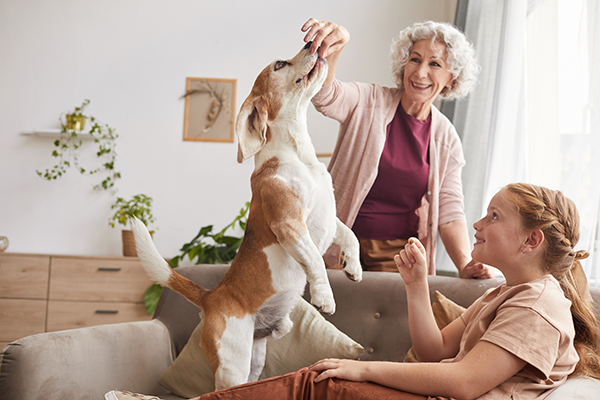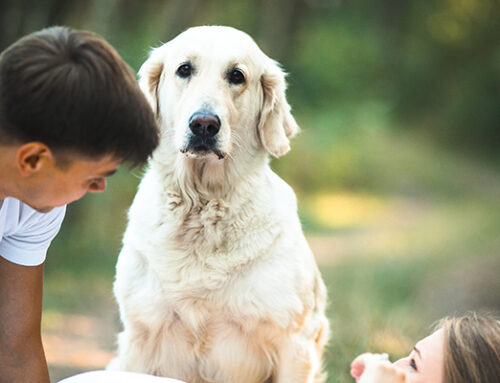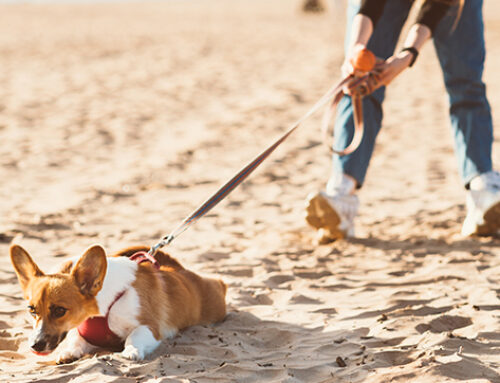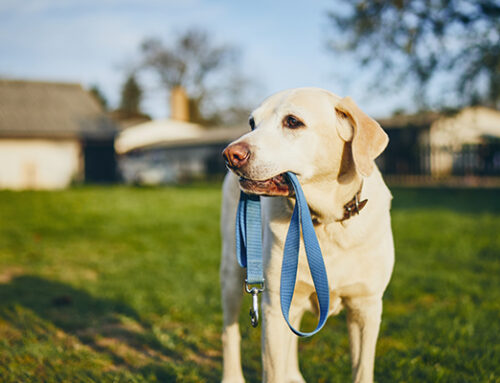How To Resolve Fence Fighting

Fence fighting is what happens when dogs on opposite sides of a fence or other barrier act in a barking, aggressive frenzy when they see one another. This barking can start off friendly enough but over time the frustration of not being able to reach one another can start to fuel the behaviour causing it to escalate into downright aggression towards each other.
Dogs who fence fight aren’t necessarily aggressive by nature but through repeated exposure and practice this behaviour can develop over time. It’s the same conditioning that fuels the aggression many dogs have towards delivery people (newspaper, mail, courier) when they come to the door, get the dogs worked up and leave thus reinforcing the reaction more and more each time it happens.
At first, when the fence fighting dogs see each other outside of their yards they may still act in a friendly manner towards one another. But over time, animosity can develop and some dogs will actually aggress at and attack the other one. If you’re lucky, they will just see each other and actively try to avoid one another (as in the case of this video https://www.youtube.com/watch?v=6zUc-mpMGrs)
So many problem behaviours can be avoided by being proactive about preventing them from happening in the first place, so here are a couple of tips to help you if you’ve just moved someplace new and your dogs don’t yet have an established negative relationship:
1) Go for regular walks together. Walking creates a pack unity and helps dogs relax around one another. If one dog is already aggressive then walk parallel to one another but keep your distance and consider getting the help of a trainer to guide you through proper and safe introductions once the dogs are ready.
2) Ask your neighbour if you can give their dog(s) treats. If yes, then when the dogs are outside together, stand at the fence and reward both dogs for simple behaviours like sit (provided they aren’t barking at or fighting with each other). Do this every time the dogs are outside so that they start to anticipate good things happening in each others presence.
3) Don’t leave your dog in the yard unsupervised, especially for prolonged periods of time. A bored dog is more likely to get into trouble especially if you aren’t there to interrupt or redirect it in time.
If your dogs already have a well established habit of fighting through the fence, here are a couple of things to try:
1) If the dogs can see each other through the fence, put up a visual barrier like a tarp or pieces of plywood (as shown in the photo) so they can’t see each other anymore. Often that alone stops a lot of the fighting.
2) Go outside with your dog and redirect or interrupt them every time they show interest in the neighbouring yard.
3) Teach your dog that when your neighbours dog starts barking it is the predictor of a fun game with you, like fetch, tug or games involving high valued treats.
ie. Dog barks -> game starts OR Dog barks -> training starts
4) One of my own dogs used to go bananas barking just at the sound of the neighbours dogs barking even when we were inside the house. So I got some high valued treats (it happened to be goat cheese that particular time) and any time the neighbour dogs barked I would call her to me and she would get to lick goat cheese off my finger for a minute or two. It didn’t take more than a week before she came running to me looking for treats when she heard barking and eventually completely ignored it altogether.
5) If your yard is conducive to it and/or it’s financially feasible, you may need to put up a secondary fence 5 – 10 feet or more back from the main fence to keep the dogs at a safe distance from each other, especially if their is the potential for the dogs to injure each other.
6) If the dogs are able to bite each other through the fence and a visual barrier isn’t an option, consider putting a motion activated sprinkler, like a Scarecrow, near the fence to deter the dogs from getting close to the fence.
While you may not completely solve the problem, they’ll definitely help shift things in a more positive direction.
Until next time,
Darcie Jennings
Stay connected with us on Facebook

























